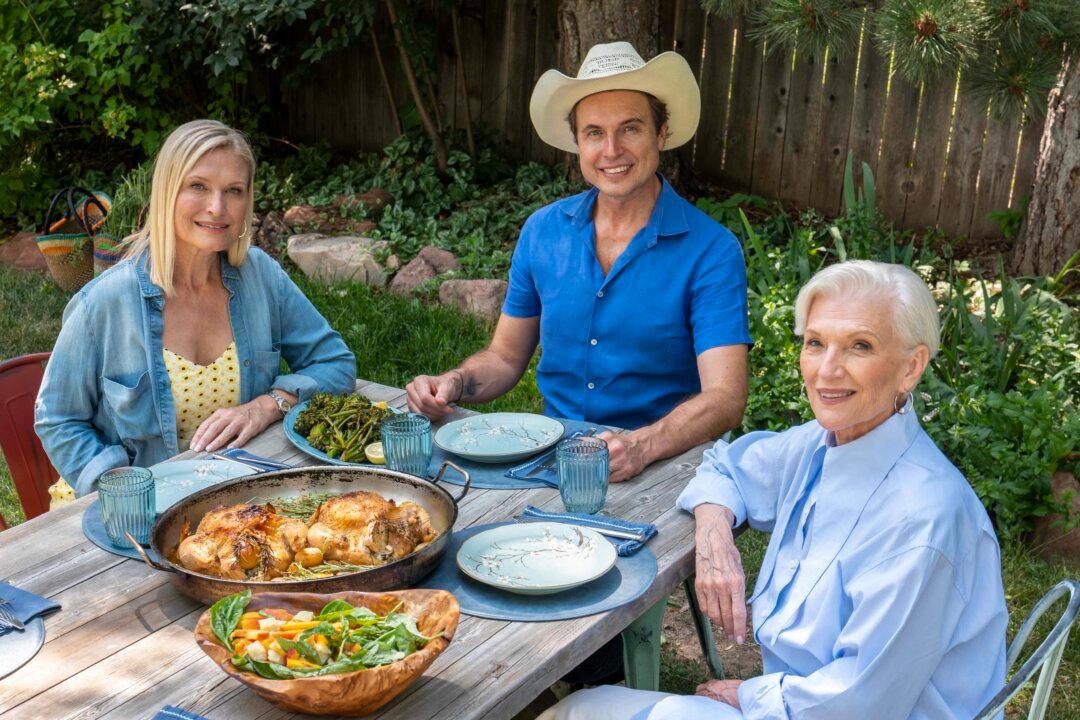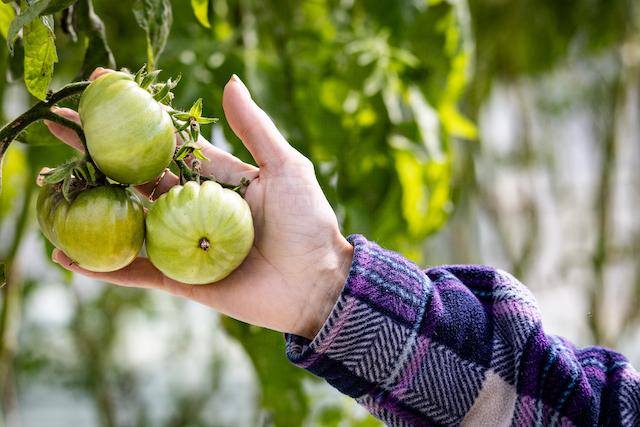When Irina Georgescu was young, her mother kept a secret stash of “black market” recipes in an old chocolate box.
Romanian-born Georgescu, a Wales-based food writer, grew up in Bucharest under communist rule. The regime set out to forcibly industrialize and homogenize the country, stamping out traditional artisanal skills and reducing a colorful swath of regional cookery to recipes contained in a single cookbook.
But what Georgescu calls a black market of recipes flourished: instructions for homemade sausages, or Hungarian goulash, or dobos torte, seven layers of sponge cake and chocolate buttercream with a caramel topping. Even with ingredients scarce and knowledge restricted, people held tight to these culinary traditions, passing them down through word of mouth and scribbling them on napkins and scraps of paper for safekeeping. Georgescu remembers her mother’s collection well.
“I loved that box, I don’t know why,” she said. “I used to organize it by recipe, and then organize it by color; [I would] organize it all the time. Even when I didn’t understand it, I loved to open it; there were all these bits and bobs there. It [was] like a treasure hunt.”

Irina Georgescu. Courtesy of Irinia Georgescu
Georgescu has just written her first cookbook, “Carpathia: Food From the Heart of Romania,” and flipping through its pages feels like something of a treasure hunt, too.
Here are some of the riches kept safe within: A nettle fricassee made with 14 cloves of garlic, eaten as the first dish of spring. Cold-smoked fatback, slanina, one of the many nose-to-tail preparations of pork that sustain Romanian families through the winter, after the traditional slaughter of a pig on Christmas. A dome-shaped bread made from boiled polenta, mamaliga, that comes with a prediction of your future (“if the top cracks, it means that you’ll take a long journey”) and a cure for a broken heart (“drink water from the pot where you cooked it, and think of nothing but the meal in front of you”).
It’s a record of traditional Romanian home cooking, told through Georgescu’s family recipes and stories, but anchored in centuries of rich history and cultural heritage. For non-Romanians, the book shines a spotlight on a cuisine—and country—underexplored and often overlooked.
“Some people actually think that, for instance, Transylvania is just a thing in a book, it doesn’t exist in reality. Other people don’t know where Romania is,” Georgescu said. “I wanted people to realize where we are, and who we are.”

Romania is a land split between mighty mountains and forests, vast plains, rolling hills, and lush river delta. Courtesy of Interlink Publishing
‘A Culinary Melting Pot’
That starts with understanding the landscape: a collage of vast plains and ancient forests and rolling hills, cut through by the Carpathian Mountains and bordered by the mighty Danube River, which flows into the Black Sea on the country’s southeastern coast. Recipes vary by region, and follow the seasons and a calendar of holidays and celebrations.Throughout history, the region witnessed a succession of great empires—Roman, Byzantine, Ottoman, Austro-Hungarian, and Russian—and years of war, conquest, and cultural exchange all left lasting legacies on Romanian culture and cuisine. The result, as Georgescu puts it, is “a culinary melting pot.”
Thanks to Greek and Turkish influences in the south and east, for instance, Romanian meals begin with mezze-style spreads, full of all sorts of dips and salads and smoky charcuterie with cheese and pickles to share.

These roasted peppers and eggplant dip are always on a table of Romanian starters, and always together. Jamie Orlando Smith Photography
Ottoman rule also gave rise to Romania’s national dish of sarmale (from the Turkish word “sarmak,” meaning “to wrap” or “to roll up”), sauerkraut rolls stuffed with ground pork and rice, baked in a rich tomato sauce, and served with sour cream and polenta.
The Ottomans also brought maize and polenta, which is “a whole world on its own,” Georgescu said. “We eat a lot of it—more than the Italians, I would say,” whether cooked into a creamy porridge or a sturdy bread, baked into cakes both savory and sweet, or used as an ingredient to thicken soups or coat meat or fish for frying.

Bulz, a shepherd's snack of polenta balls stuffed with cheese, can be baked in the oven or cooked in the embers of an open fire. Jamie Orlando Smith Photography
Slavic influences, meanwhile, are behind Romania’s beloved bors, a tangy-sweet liquid from fermented wheat and cornmeal. It stars in a whole category of sour soups—also called bors, for their main ingredient—enjoyed between the appetizer and the main course.
And from Austrian, Hungarian, and Germanic influences in the north and west come slow-braised meats, noodles and dumplings, and hearty stews of beans and potatoes. Hungarian paprika enlivens many savory dishes, while in the realm of sweets, sophisticated layer cakes from Vienna join flaky filo pastries from old Byzantium.
“I always say Romanian cuisine is tasty and delicious because it is a bit Hungarian, and it is a bit German, and it is a bit Serbian and Bulgarian and Greek and so on,” Georgescu said. “We have loads of really diverse communities, and we have loads of recipes.”
So while Romanian cuisine may not be as well known in the West, there’s a good chance that once you start exploring it, it’ll already feel in some ways very familiar. “I think that a lot of people will realize that we’re not that different,” Georgescu said.

Mici, meaning "little ones," are a Romanian street food staple, cooked on huge grills set up along the streets. Jamie Orlando Smith Photography
Loss and Revival
For a period in history, though, those rich and diverse culinary traditions were in danger of being lost.When Romania fell under communist rule, from 1947 to 1989, its people and culture suffered immensely: Collectivization stripped farmers of their land and resources, villages were destroyed, and people were forced from the countryside to the urban apartments that replaced them.
“I think we lost a lot that I can imagine, but more than I can imagine,” Georgescu said. “By moving people to an urban environment, they lost a lot of their recipes, and then by nationalizing everything, you lost a lot of people’s skills in the countryside.”
“What do you do with all those skills, like making sausages, making cheese, looking after animals? You don’t even have space to do any of that. In this way, we kind of lost [our] artisanal skills. Nobody had that connection with the land and with the crops anymore.”
Still, she said, there’s hope: “Now, there are definitely a lot of people who have started to value all our traditions. After the revolution [in 1989] and probably in the last 10 years, people have started to look at their roots, to go back to the village, to interact with all the people and ask, ‘How was it for you?’ or ‘What did you used to cook?’”
She cites popular food bloggers specializing in regional recipes; photographers who travel the Romanian countryside documenting village life and traditions; even programs that teach kids about traditional cookery and crafts, or host large-scale brunches in rural villages, serving regional foods cooked by the locals.
“So there is hope that we will go back and we will retrieve those old recipes and old traditions, and we will collect them and preserve them,” Georgescu said. “It’s lovely to see, because it encourages me to keep writing about it.”

Summer apricots shine in a tender, fluffy yogurt cake, a testament to Romanians' love for baking with fruit. Jamie Orlando Smith Photography
Family Legacies
That kind of preservation, she says, starts with home cooking.“I think what I tried also to get across with the book was to actually make people go back to their families, to pick up the phone and say hello to Mum and say, ‘Remember your apple cake? How did you used to make it?’”
In Romania, Georgescu said, “our mothers are our culinary bibles,” the keepers and transmitters of recipes and traditions through generations. “You learn from the women in your family, and you end up being one of them.”
Georgescu grew up helping her mother and grandmother in the kitchen, stretching strudel dough and whisking mayo by hand, absorbing cooking lessons she was surprised she retained years later. When she began writing “Carpathia,” she relied on those early lessons; her mother passed away before she could ask for new ones.
“This is the only way we can actually keep our traditions alive—our family cooking, family recipes,” she said. “I didn’t do this with Mum when she was alive, and that was my mistake. I was busy being an adult, … and when I was ready to ask, I didn’t have her around.”
“So I would like to have people actually connect with their families and try to find family recipes, even if they are not in their repertoire at the moment. Because that is important.”
And once you do, she said, make them together. Write them down. And then perhaps tuck them away in an old chocolate box, to keep safe for generations to come.

“Carpathia: Food from the Heart of Romania” by Irina Georgescu (Interlink Publishing, $35).






